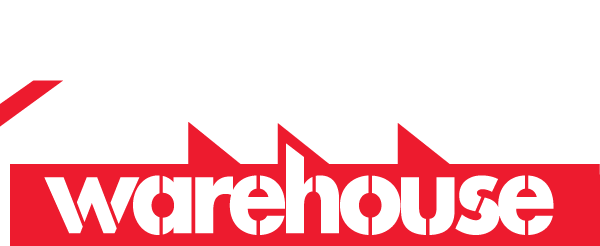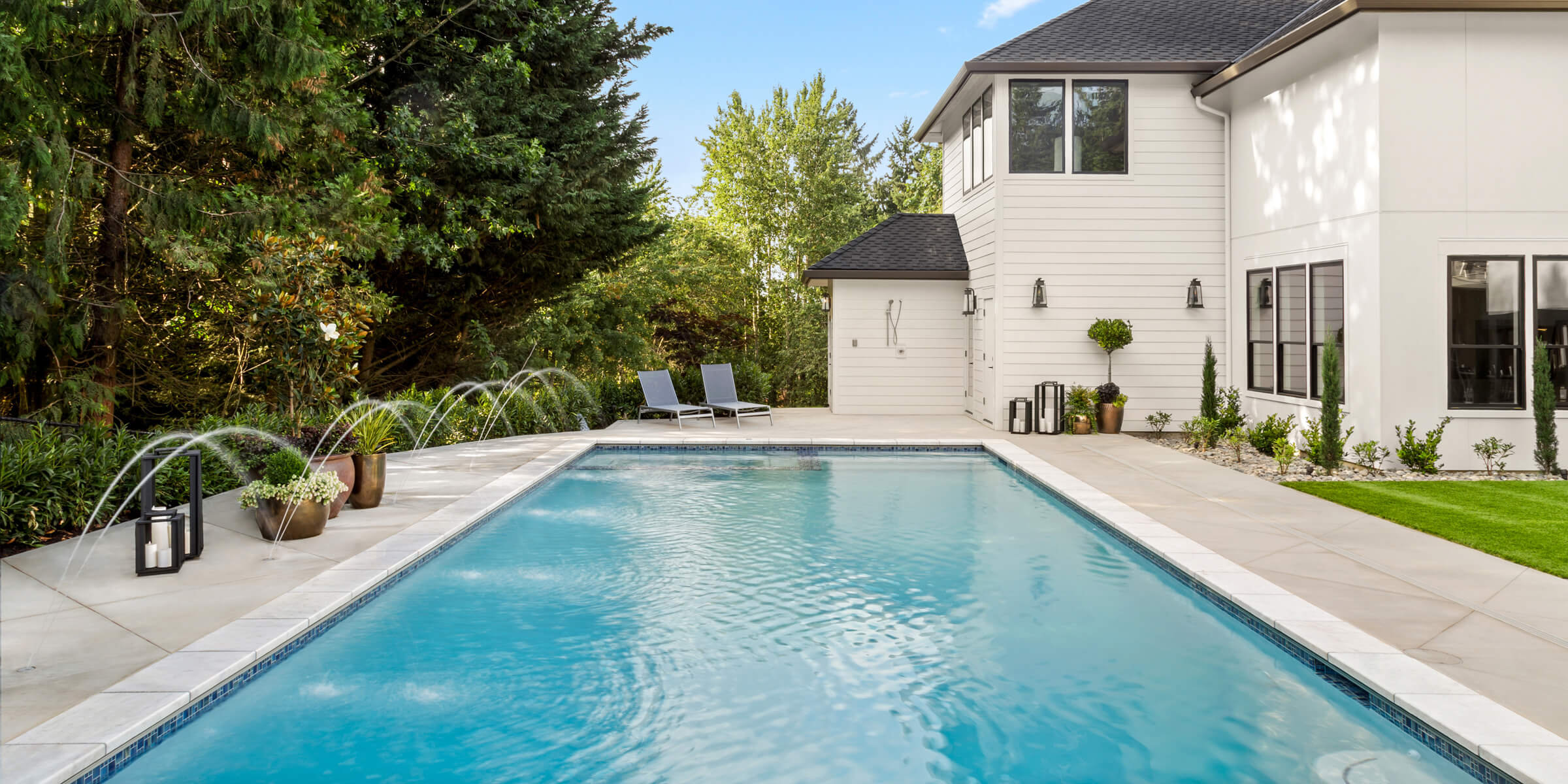Your pool pump is like the heart of your backyard oasis, keeping water moving and clean, just as your heart keeps your blood flowing. If the pump isn’t the perfect match for your pool’s size, you’re bound to run into trouble. That could mean dealing with murky, green water, soaring energy bills, or damage to other equipment.
You may ask yourself, so, what size pool pump do I need?
To answer this, we need to understand why it’s important. There are four important factors we need to measure to calculate the pool pump size we need:
- Flow Rate
- Turnover Rate
- Head Pressure
- Filter Compatibility
In this blog post, we’re going to be diving into what these terms mean and why they affect your swimming pool pump size.
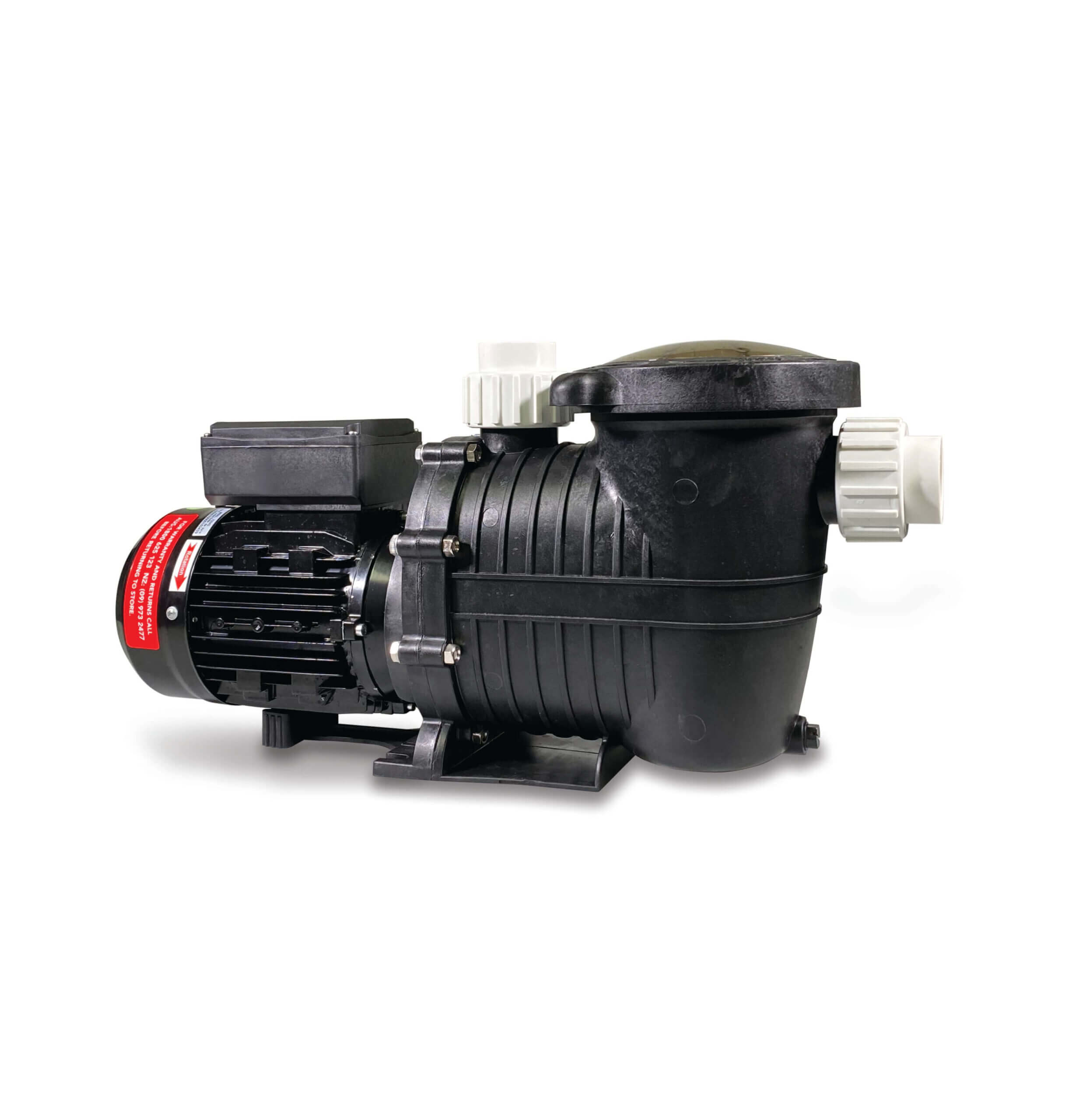
Understanding Pool Pump Functionality
Before we answer your question about the right pool pump size, you need to first understand how they operate.
Your pool pump is the most important component in maintaining not only the cleanliness of your swimming pool’s water but also its safety. Your pump does this by taking the water from the pool and pumping it through the filtration system and then back again – constantly, just like our heart analogy mentioned previously.
This pumping process also works to keep your pool healthy in other ways, as the continuous pumping cycle distributes your chemicals evenly, removes debris, and prevents the growth of algae.
It’s important to note that if your pool is heated or you use any additional water features, your pump is directly responsible for these. You’ll need to incorporate these into your swimming pool pump size calculations.
Pool pumps really are vital; without them, your pool’s cleanliness and safety cannot be maintained – which is why ensuring you have the correct size pump is so important.
Calculating Your Pool Volume
Measuring the volume of water in your pool is important as it is directly related to flow rate. The flow rate is one of the three measurements we need to correctly understand what size pump we need.
If maths wasn’t your forte, don’t panic; calculating your pool’s volume is quite straightforward:
Rectangular or square pools
- Multiply the length by the width and average depth. E.g., 6m x 4m x 1.5m = 36m²
- For the average depth, add the deep end depth by the shallow end depth and divide by 2.
- Multiply the result of step 1 by 1000 to get pool volume in litres. E.g., 36 x 1000 = 36,000L
Round or circular pools
- Measure the diameter across the center and halve that number to get the radius. E.g., if the diameter is 6m, halve this to get a 3m radius.
- Square the radius (multiply the radius by itself). E.g., if the radius is 3m, then 3 x 3 = 9.
- Multiply the result from step 2 by the average depth. E.g., if the average depth is 1.5m, then 9 x 1.5 = 13.5.
- Multiply the result from step 3 by 3.14 (π). E.g., 13.5 x 3.14 = 423.9.
- Multiply the result from step 4 by 1000 to get the volume in litres. E.g., 423.9 x 1000 = 423,900L.
Oval Pools
- Measure the length and width of your pool, edge to edge. E.g., 6m x 4m = 24.
- Multiply the result by 3.14 (π). E.g., 24 x 3.14 = 75.36.
- Divide the result by 4. E.g., 75.36 / 4 = 18.84.
- Multiply the result from step 3 by the average depth. E.g., 18.84 x 1.5m = 28.26.
- Multiply the result by 1000 to get the volume in litres. E.g., 28.26 x 1000 = 28,260L.
Kidney-shaped pools
- Measure the length of the pool, the short width (smaller circular side), and the longer width (larger circular side). E.g., 6m x 3.5m x 2.5m = 52.5m³
- Multiply the result by 0.45. E.g., 52.5 x 0.45 = 23.625
- Multiply the result by the average depth. E.g., 1.5 x 23.625 = 35.44
- Multiply the result by 1000 to get the volume in litres. E.g., 35.44 x 1000 = 35,440L
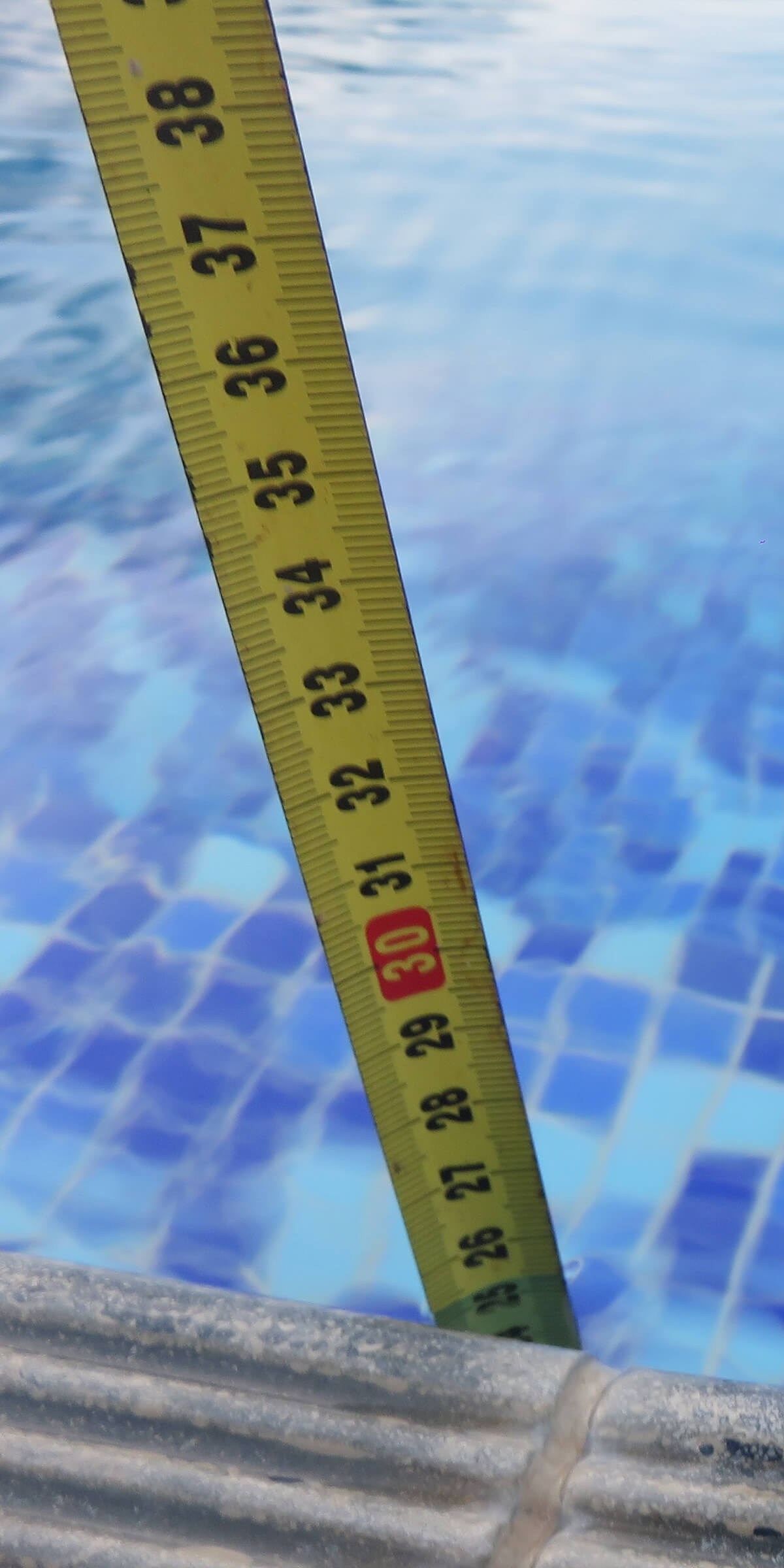
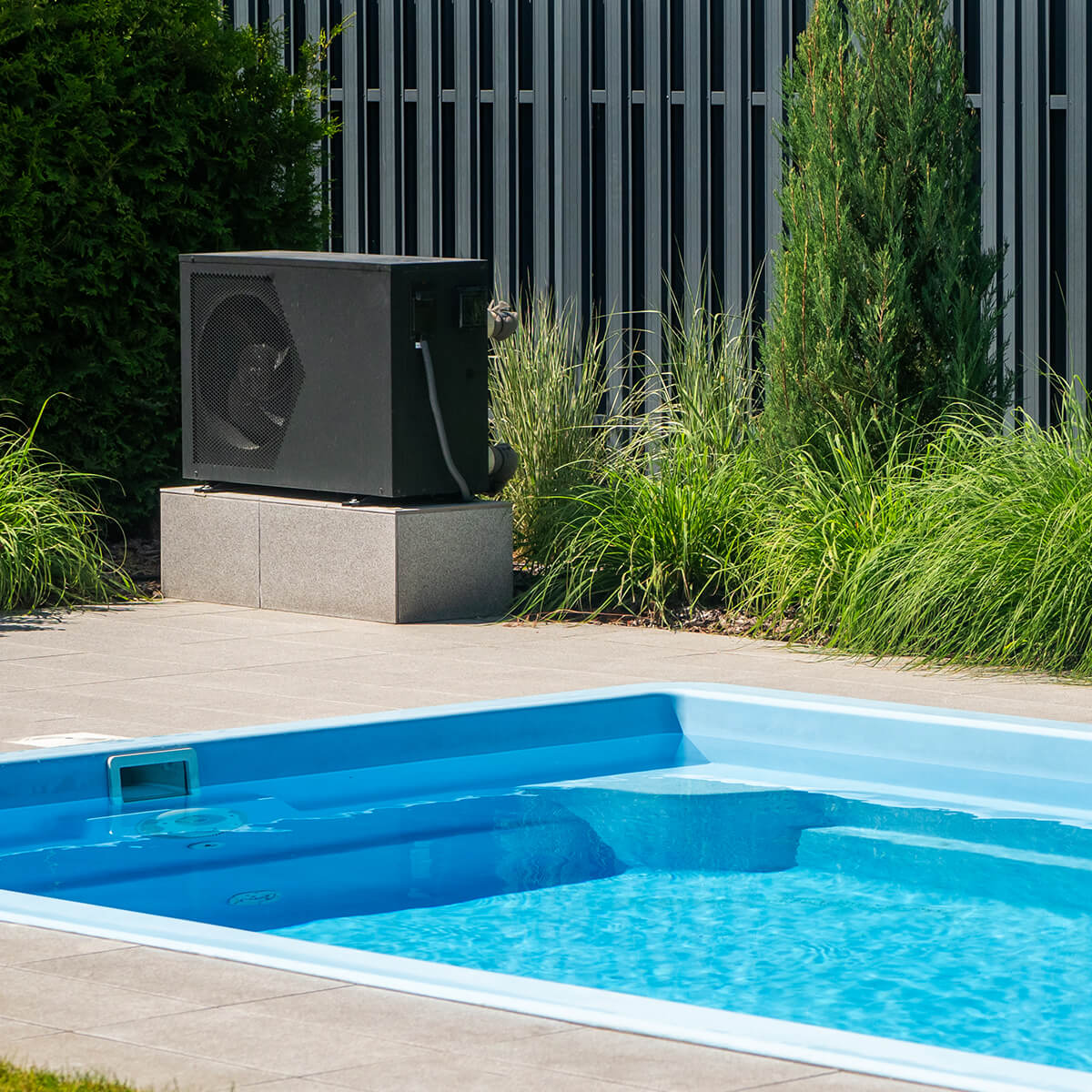
Flow Rate and Turnover Rate
Next, we need to calculate the flow and turnover rates. Your pool’s flow rate is the amount of water that passes through your filtration system within the designated period of time – measured in litres per minute (LPM).
The turnover rate is similar but slightly different. This rate is how long it takes for the complete volume of your pool to pass through your filter system – this is measured in hours (H).
To calculate the flow rate:
- Determine your pool volume
- Divide the total pool volume by the desired turnover rate
- For example, pool volume = 40,000, and desired turnover rate = 4 hours. 40,000 / 240 minutes = 167 LPM.
You therefore need a pool pump with a flow rate greater than 167 litres per minute. There is, however, one other consideration… head pressure and resistance.
Head Pressure and Resistance
To estimate the head pressure in your pool, you need to start by identifying the filters, heaters, chlorinates, and any other components through which the water will need to travel. This is known as the total resistance and is measured as the feet of the head pressure or dynamic head.
You’ll also need to factor in additional resistance due to the piping length, internal diameter, number of bends and elevation. The total of all of these will give you your overall head pressure.
When selecting a pool pump, you need to ensure it has a greater overall head pressure than you need; if it is less, the pump cannot maintain an adequate flow, which will lead to your water not being filtered correctly.
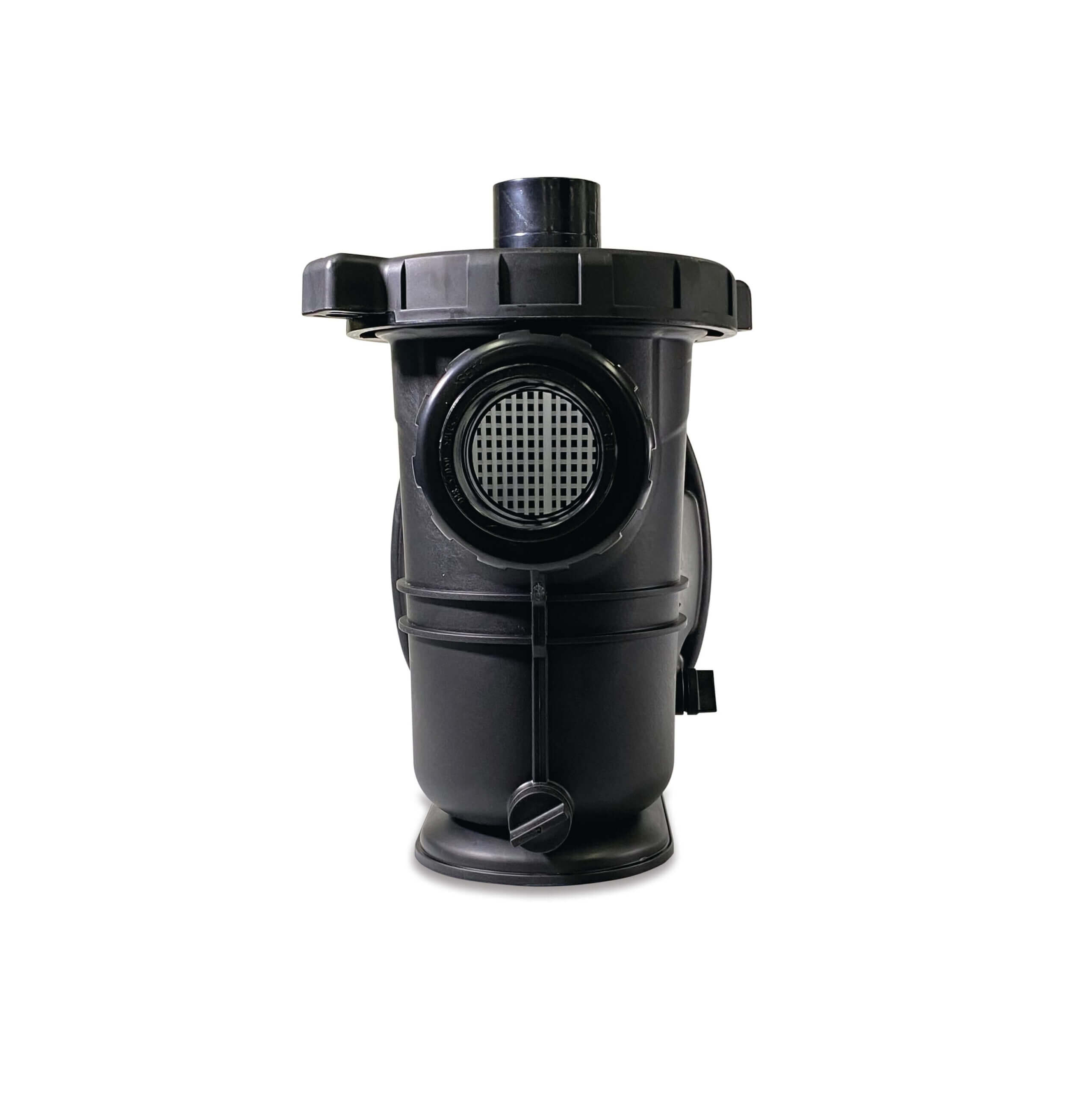

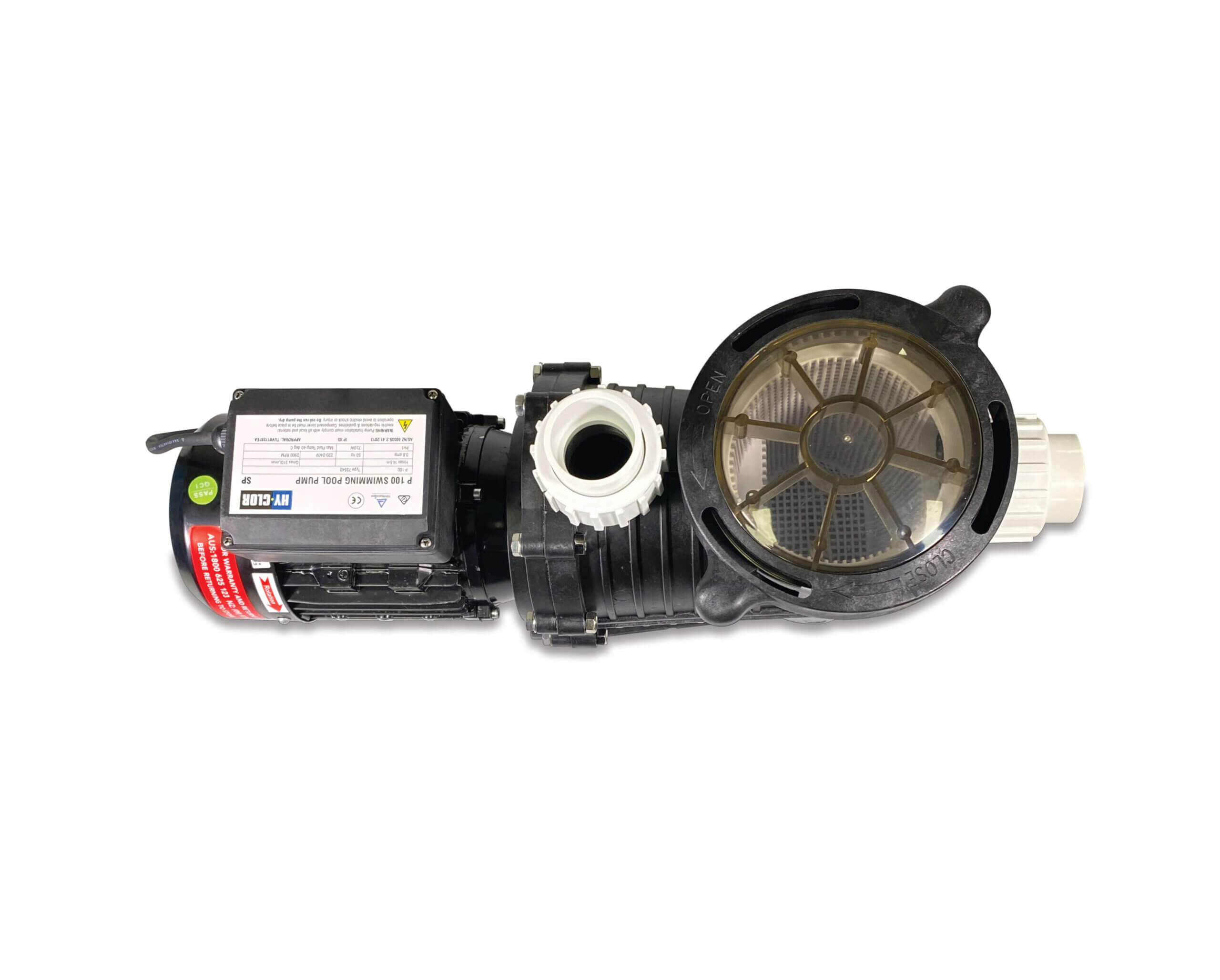
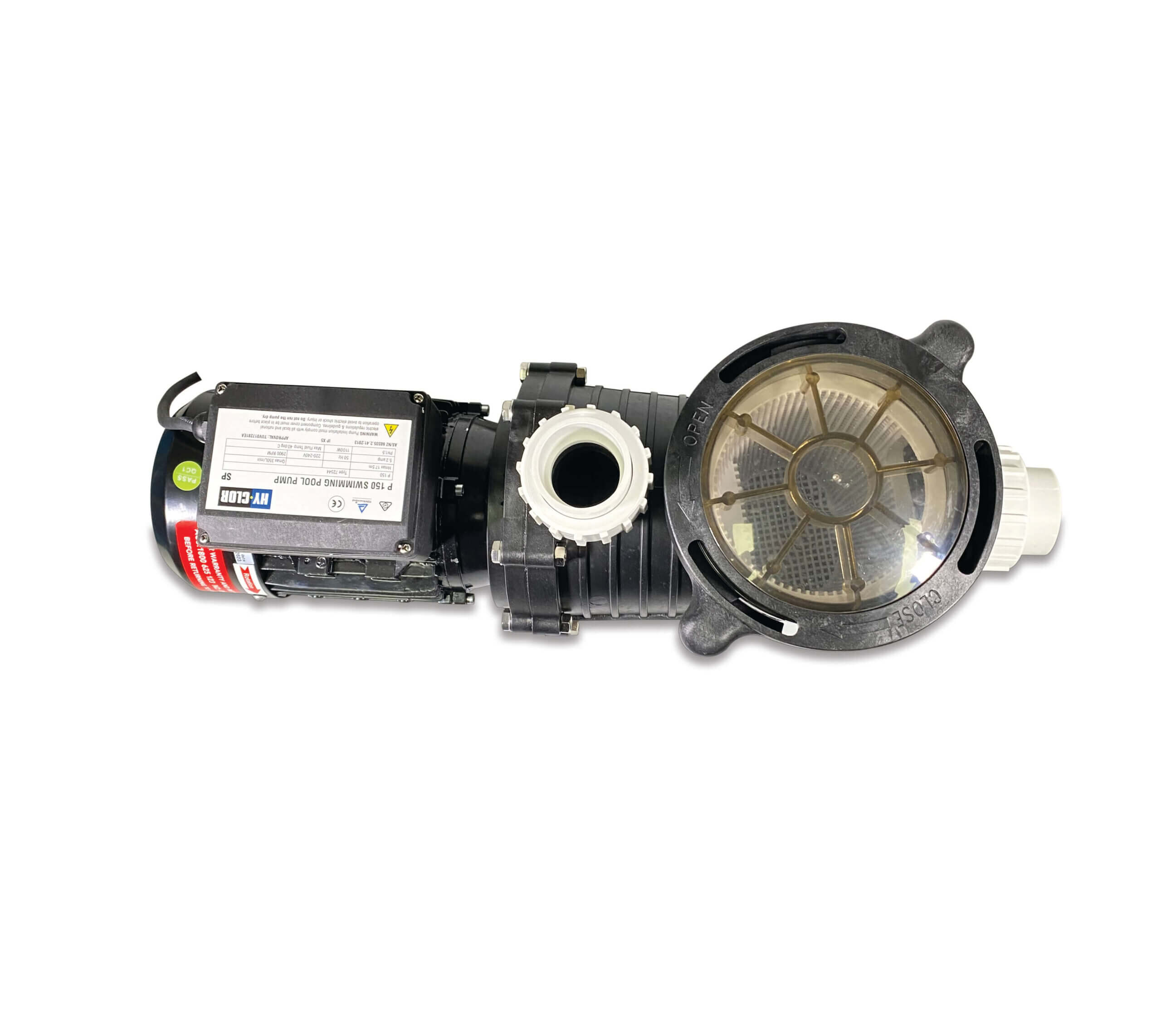
Types of Pool Pumps
When selecting the right pump for your pool, you have four main types to consider: single-speed, dual-speed, and variable-speed pumps.
Single-Speed Pumps
- Pros: Single-speed pumps are the most cost-effective option. They are simple in design and easy to operate.
- Cons: They operate only at one high speed, which can be less energy-efficient and generate more noise.
Dual-Speed Pumps
- Pros: Dual-speed pumps can switch between high and low speeds, offering more flexibility and better energy efficiency than single-speed pumps at low speeds.
- Cons: While more efficient than single-speed, they are usually more expensive and still not as energy-efficient as variable-speed models.
Variable-Speed Pumps
- Pros: Variable-speed pumps provide the best energy efficiency as they can be programmed to run at different speeds for various tasks. They are quieter and can significantly lower electric bills.
- Cons: These pumps require a higher initial investment but often pay off in the long term with energy savings.
An inverter motor pump uses variable frequency drive to control speed.
- Pros: Inverter pumps are generally much quieter to run and more energy-efficient than standard variable speed pumps.
Cons: These pumps require a higher initial investment.
Filter Compatibility
If the pool system has an existing filter, the single most important consideration for selecting the correct sized pump, is the maximum flow rate that the sand or cartridge filter can handle.
Exceeding the filters designed limit can lead to reduced efficiency, increased wear and tear, and potential system failures. Additionally, operating beyond the recommended flow rate may void warranties and result in costly repairs or replacements.
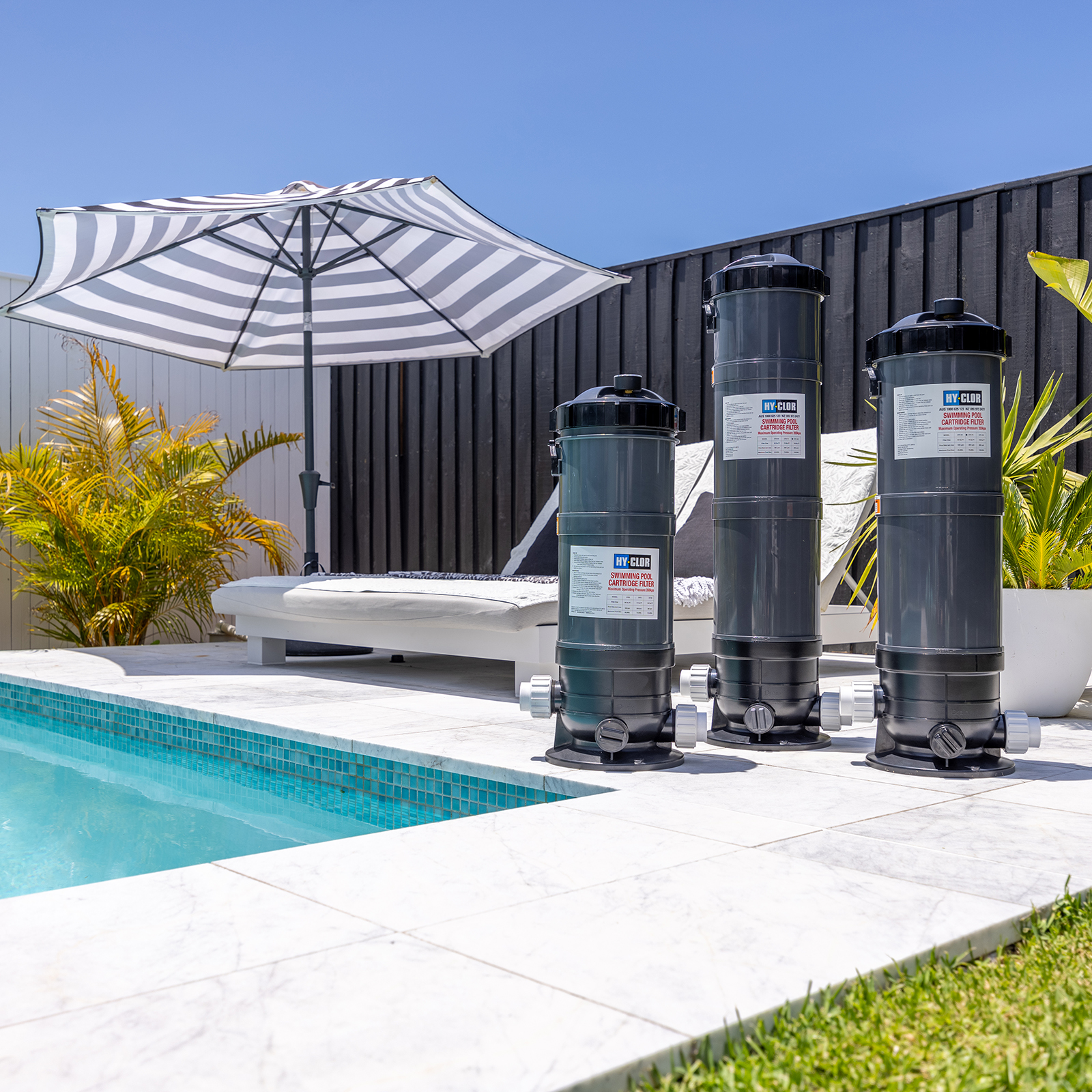
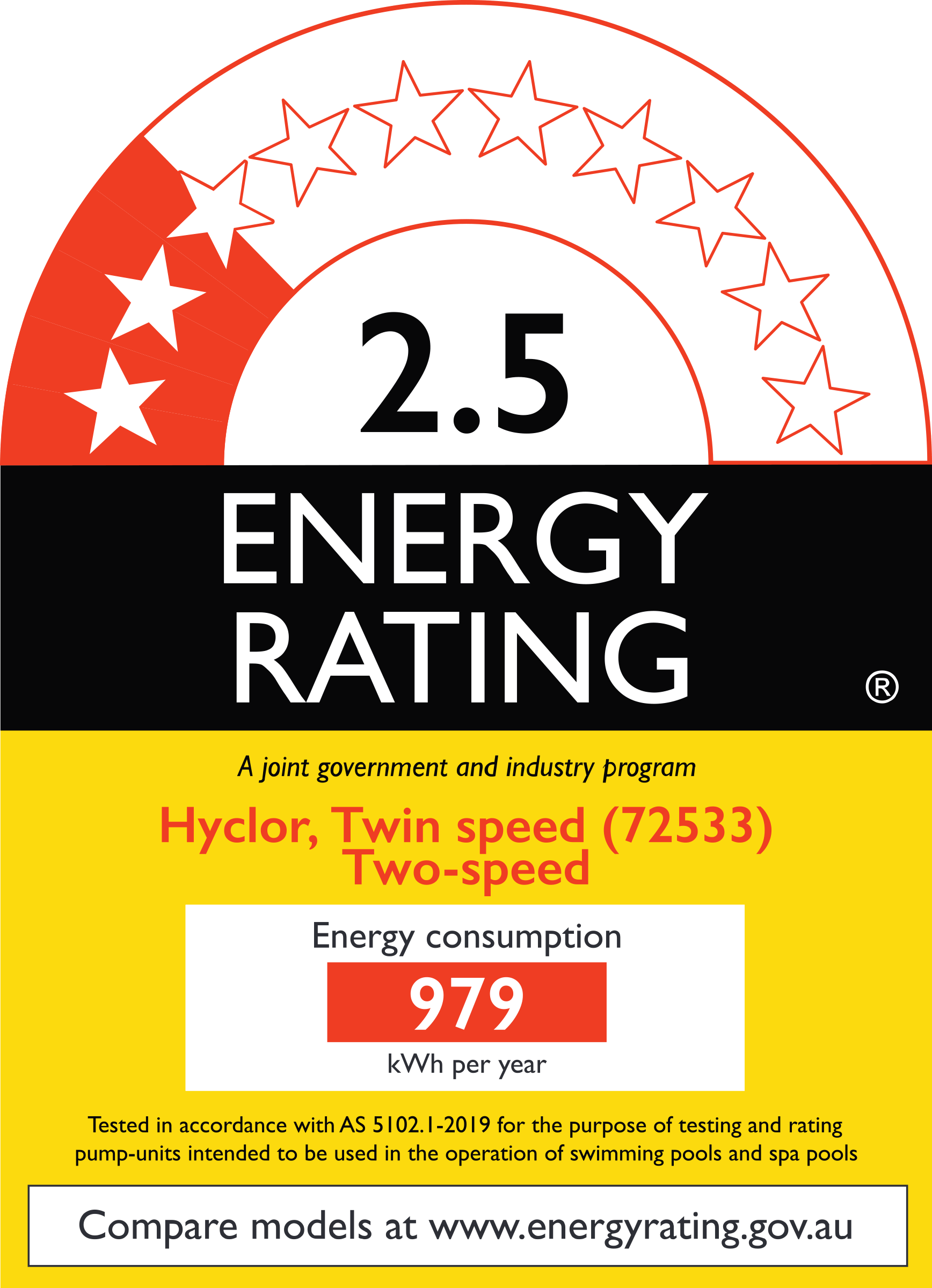
Energy Efficiency Considerations
Finding an energy-efficient solution for your pool pump is essential to keeping your running costs low and your pool’s environmental impact minimal. The size of your pump will directly affect how energy efficient it is and is one of the main reasons for the importance of getting the size right. By doing so, you’ll reduce both your running costs and your environmental impact.
Pumps that are larger than necessary will burn a hole in your wallet, with pumps only marginally bigger costing up to double the electrical cost, from $0.23 to $0.45 per hour. A pump that is too small will be required to run more often, and the same problem will occur: you’ll use more electricity than you need to, waste money, and harm the environment.
Expert Tips for Pool Pump Sizing
- Knowing Your Pool Volume: It is generally recommended to circulate the entire volume of your pool up to twice a day.
- Choose a Variable-Speed Pump: If in doubt, it’s generally better to choose a pump that’s slightly more powerful than needed and use a variable-speed pump to adjust the flow rate accordingly. This can lead to more savings in the long run, as you can run the pump at lower speeds most of the time.
- Filter Compatibility: Filters come in various shapes and sizes, each with a maximum flow rate that serves as a limiting factor. It is important to consider this limit, as exceeding it can place additional strain on the pump and filter system, potentially leading to problems and failures that are often not covered under warranties.
Adhering to these tips will help you make an informed decision when purchasing a pool pump, balancing performance with energy savings for an environmentally and economically sound choice. Our Learning Centre has plenty of advice on measuring chemicals for your pool.

FAQs about How To Find The Right Size Pool Pump
The three factors you need to identify before you can calculate the size of the pump your pool needs are Flow Rate, Turnover Rate and Head Pressure. Start by calculating these and then plug them into a pool pump size calculator, or reach out to a professional. The Hy-Clor app is a great resource you can use.
It’s difficult to generalise the pump size needed for a 70,000-litre pool, as there are other factors that play into the pump size required – as we’ve discussed. Your pipes, heaters, water features and any other component that adds resistance will need to be added to your calculation. If you’re not sure, it’s always best to consult a professional before purchasing.
You’ll start to notice your pump underperforming, and issues like poor filtration, cloudy water, algae growth and inefficient cleaning will begin. This is due to the inadequate circulation of your pump.
Let’s Get Pumped: Find Your Perfect Pool Pump Today!
Calculating what size pool pump you need can be daunting; the variety of factors that play into it can become overwhelming to consider. Ensure you calculate the essential numbers of the Flow Rate, Turnover Rate and Head Pressure, and you can make an informed decision.
But remember, if you’re unsure, it’s always best to reach out to a professional to make sure your pool pump is the correct size, or alternatively, you can use the Hy-Clor app to browse their wide variety of pool products to streamline your decision. As well as receive personalised recommendations.


